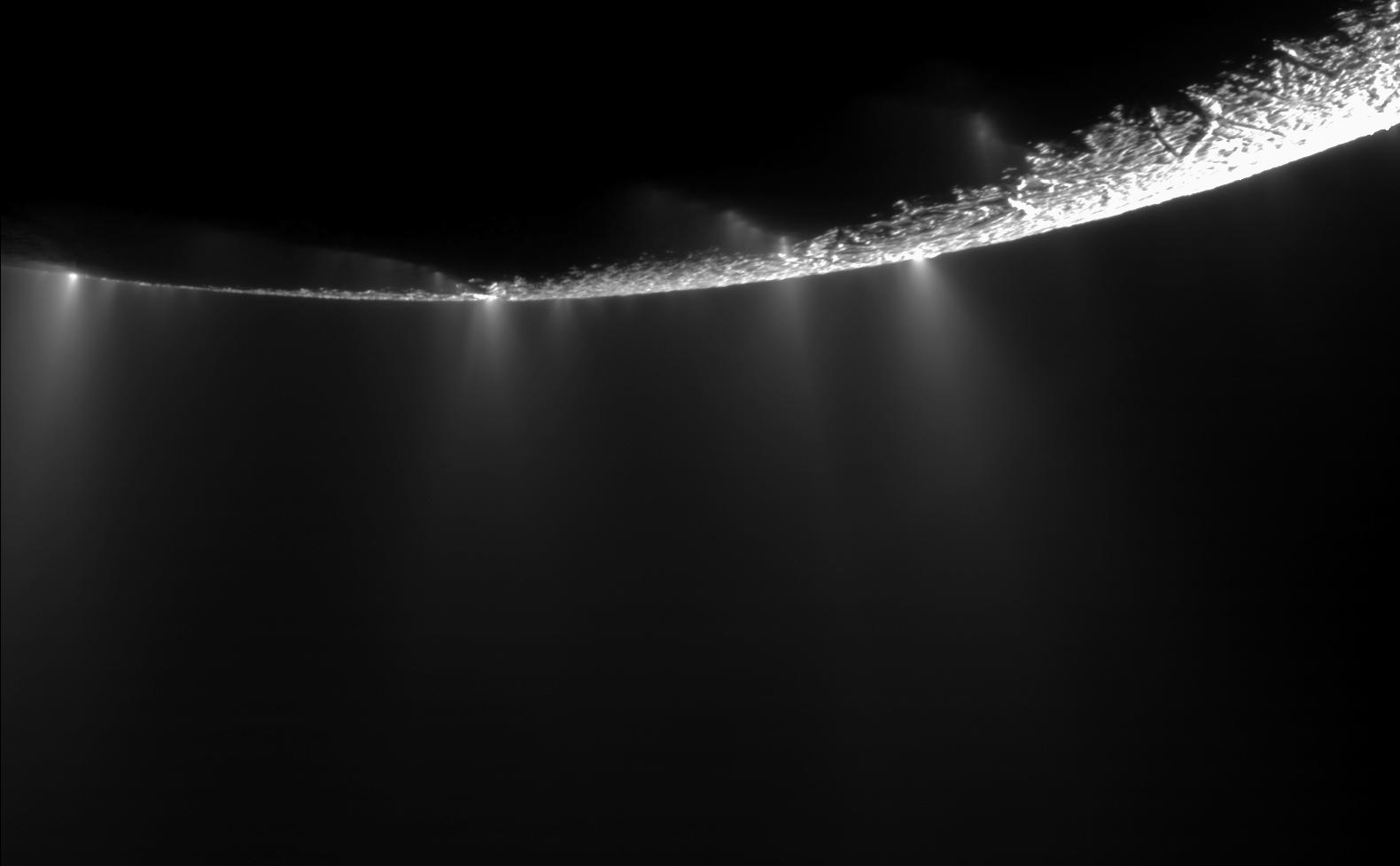NASA Probe Flies Through Saturn Moon Enceladus' Plume


NASA's Cassini spacecraft has made its deepest dive yet through the plume emanating from the south pole of Saturn's icy moon Enceladus.
Cassini flew low through the plume today (Oct. 28) at about 11:22 a.m. EDT (1522 GMT), zooming within a mere 30 miles (50 kilometers) of Enceladus' frigid surface. During the encounter, the spacecraft snapped photos and gathered samples that should help researchers learn more about the moon's life-hosting potential. (An ocean of liquid water sloshes beneath Enceladus' icy shell, and the plume material comes from this subsurface sea.)
Cassini checked in with its handlers a few hours after the encounter, providing a general status and health update. The first flyby photos won't be released until Thursday night (Oct. 29) or Friday (Oct. 30) at the earliest, while initial analyses of plume particles will likely take a week or so, mission team members have said. So keep checking back with Space.com to see what the close encounter — the 21st Enceladus flyby Cassini has performed since arriving in the Saturn system in 2004 — ends up revealing.
Follow Mike Wall on Twitter @michaeldwall and Google+. Follow us @Spacedotcom, Facebook or Google+. Originally published on Space.com.
Breaking space news, the latest updates on rocket launches, skywatching events and more!

Michael Wall is a Senior Space Writer with Space.com and joined the team in 2010. He primarily covers exoplanets, spaceflight and military space, but has been known to dabble in the space art beat. His book about the search for alien life, "Out There," was published on Nov. 13, 2018. Before becoming a science writer, Michael worked as a herpetologist and wildlife biologist. He has a Ph.D. in evolutionary biology from the University of Sydney, Australia, a bachelor's degree from the University of Arizona, and a graduate certificate in science writing from the University of California, Santa Cruz. To find out what his latest project is, you can follow Michael on Twitter.

